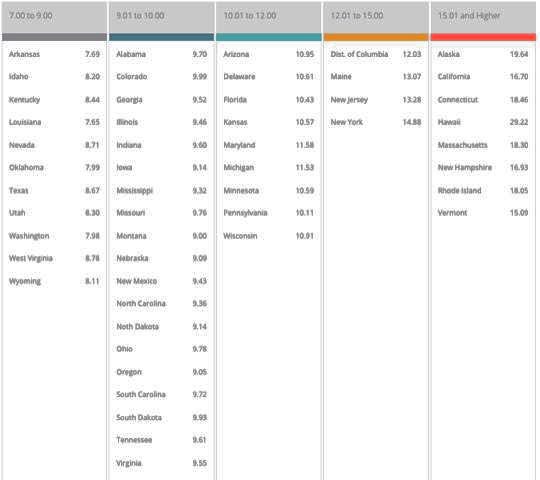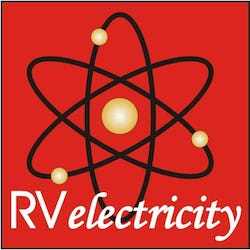What cost, electricity?
Can campgrounds continue to offer “free” electricity as we demand more power?
How much does it cost a campground to supply you with “free” electric power?
No, this isn’t going to make me a popular guy with the general readership. But I’m going to discuss what it actually costs a campground to supply electricity to your RV, and should they be metering you for it? I see the pitchforks and torches on the horizon already, but I’m not here to discuss the policy or politics of campground rates. I’m just trying to get a handle on why so many campgrounds seem to have poorly maintained electrical pedestals, very low voltage (as low as 95 volts at some state campgrounds), and corroded or missing electrical grounds that would NEVER pass any kind of electrical inspection.
Why does this happen and what can we do about it? Well, as Heinlein used to say, “TANSTAAFL” (There ain’t no such thing as a free lunch) – and he was right. I should also add that if the average consumer gets something for “free” they tend to take much more of it than they normally would. The glaring example here is “free” electric power at campgrounds.
So, this is just the beginning of the discussion and I hope that a number of campground owners and operators will chime in to confirm my numbers. I’m trying to correlate just how much electricity an RV can use in a 24-hour period, depending on the type of pedestal outlet it’s plugged into.
To get started we need to examine the cost of electricity across the U.S., and it varies a lot. Here’s a map of the U.S. from 2018 showing a low of just over 7 cents per kWh (kilowatt hour) up to nearly 30 cents per kWh, with the national average just over 10 cents per kWh. Note that there can be extra fuel surcharges as well that may not show up on this map.
For those of you who are a little better at reading charts rather than maps, here’s the matching text on a state-by-state basis. Now don’t complain to me if you’re in a high-cost state because I have nothing to do with it. So Hawaii residents paid a premium of nearly 30 cents per kWh, while Louisiana was just over 7 cents per kWh. However, this chart can help explain the huge differences in the cost of electricity around the country.
So let’s examine what it could cost a campground to give you “free” electricity based on the national average of 10 cents per kWh. In review, a kWh is 1,000 watts of power for 1 hour of time. So if an imaginary portable space heater was drawing 1,000 watts for 10 hours of time the calculation would be 10 hrs. x $0.10 = $1. Of course, this doesn’t factor in the on/off thermostat time of the portable space heater, but you get the idea.
So this simple formula can help us determine the maximum cost of supplying an RV with electric power for a 20-, 30- and 50-amp service. Note that a 50-amp RV service is actually 100 amps at 120 volts, and that’s how the power company charges for it.
20-amps = 2,400 watts or 2.4 kW (20 x 120 = 2,400 watts)
30-amps = 3,600 watts or 3.6 kW (30 x 120 = 3,600 watts)
50-amps = 12,000 watts or 12 kW (50 x 2 x 120 = 12,000 watts)
Now let’s assume you’ll only be using this power 50% of the time (what we call a 50% duty cycle). I honestly think it’s a higher percentage than this during really hot summer months when all of your air conditioners are running, but I’ll stick with 50% for now.
20-amps = 2.4 kW x .50 duty cycle x $0.10 = $0.12 per hour or $2.88 per day
30-amps = 3.6 kW x .50 duty cycle x $0.10 = $0.18 per hour or $4.32 per day
50-amps = 12 kW x .50 duty cycle x $0.10 = $0.60 per hour or $14.40 per day
How to charge fairly?
The first thing I’ll note is that it’s really not fair to charge 20- and 30-amp power users the same day-rate for campground electricity as a 50-amp hookup since a 50-amp shore power user can be using $10 more per day of electricity than the others. Again, these are just hypothetical numbers, but I’ll bet I’m not too far off. And of course, many campgrounds charge extra for 50-amp hookups, and almost nobody uses 20-amp hookups anymore.
So, if my numbers are right, then a campground with 50 occupied 50-amp sites might be paying up to $700 per day to the power company for electricity, which works out to $21,000 per month during the hot summertime when everyone is running their multiple air conditioners at full blast during those 100+ degree days.
Yikes!!! So, am I anywhere near correct with these numbers? I’m inviting any campground owners reading this article to submit their actual electrical costs to me including occupied campsites, which I’ll put into a chart for my next newsletter. Don’t worry, I’ll keep your identity hidden unless you expressly tell me it’s all right to divulge your campground name. But in order to come up with a plan for better power in campgrounds, we first have to define what the power actually costs. And then we can work pedestal upgrade and maintenance costs into the equation. Email to mike (at) noshockzone.org with the topic campground, and I’ll start pulling this all together.
So, torches and pitchforks down. We’ll revisit this again next month after I get some empirical data to compare to my hypothetical numbers. I invite you all to include your comments on this topic below, but please no name-calling or disparaging remarks. I want a civil discussion about what electricity actually costs campgrounds and see if there’s any way we can help everyone get better pedestal power for their RVs.
Let’s play safe out there…. Mike









A guy who quotes Heinlein is alright with me!! BTW, electrical rates here in San Diego go from 45 to 56 cents per KWH. Yep, highest rates in the county thanks to our progressive government. They tell us that they're saving the planet. LOL!!
Your figures seem correct but you're forgetting the income generated by those 50 sites. (Modestly, $65 a night. I have seen some $175 a night.
$3,250 @ $65. Leaving $2500 profit. (not counting food sale or other add ons.
What they should do in go to installing a credit card meter that would send you notifications if usage and billing. Use more, pay more. Use less, pay less. And it could be structured to give favorable rate to longer term rental.